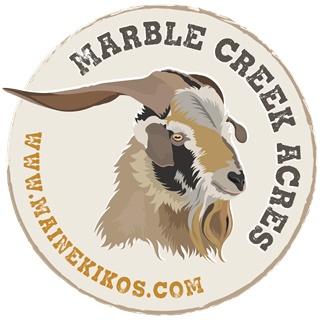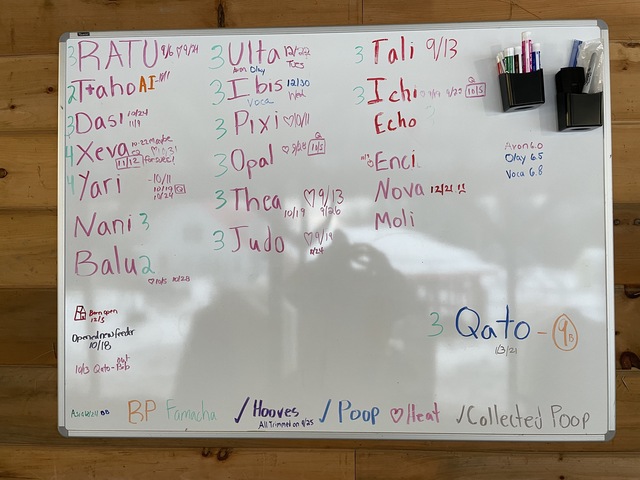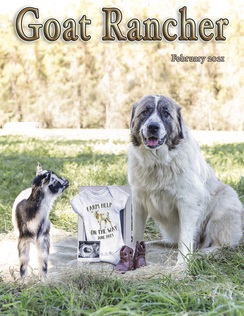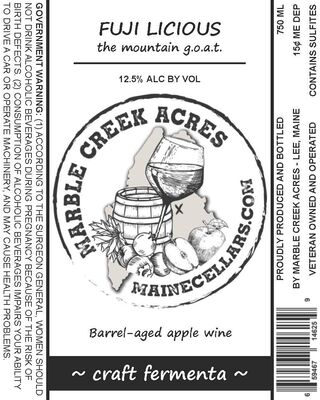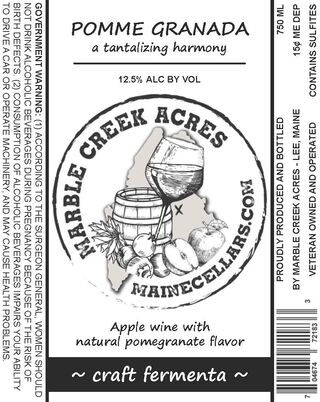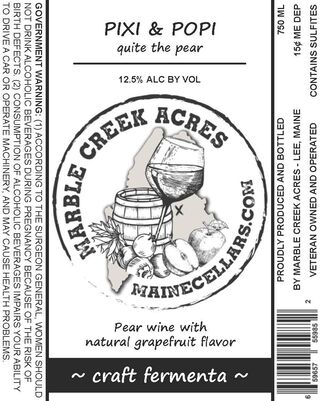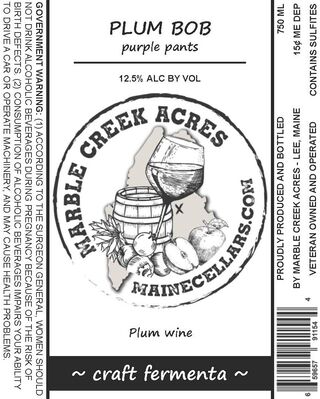Cold can’t stop the many tasks needed before kidding begins
Monday, February 1, 2021
As I sit down to write this article today, white stuff, snow, blankets the landscape outside my window. We have been fortunate so far to have a reasonably mild winter but as spring kidding is on my mind, I can’t help but be focused on thorough health checks to make sure the doe herd is ready to go for kidding season. I believe it was Benjamin Franklin who noted, “an ounce of prevention is worth a pound of cure”. This time of year is so blah in my wife’s words, which makes it difficult to want to be outside. For the Crise Crew, Health Checks are a must, an important part of making sure our herd is in good shape, making it crucial to get outside and spend some time with the herd, even in the most blah weather. Of course, we are always looking for ways to minimize our time with chores. Chores sound too much like a hobby farm. Let’s go with tasks since we are trying to make a living. As many old-timers will tell you, farming is not a get-rich-quick scheme, so minimizing your time doing seemingly menial tasks is a must if you are going to be profitable.
Yet that leaves me with how do I make sure I get health checks done efficiently, in line with approximate kidding cycles, and make sure it is all documented? Routine, or process, and documentation are key to the success of the operation. How do you keep track of everything without it causing you tons of time? Some use pen and paper. Others use spreadsheets. While still others use various website tools. And then some producers use a combination of tools for tracking including the ole-brainiac remembering everything. Mind you, I like being outside, except maybe on those really brutal days, but still, I want it to be seamless so I am not spending too much time on paperwork. I am sure producers that have been in the business for a fair amount of time have their list of dos and don’ts, and their ongoing list of tasks that must get done each season, just like we do.
For the Crise Crew, we have a two-prong approach to documenting. First, we record everything on Goatzz.com as part of individual health records, since we have our website services through Goatzz.com. Recording can be done in one step or two. Directly in Goatzz from your cell phone or an iPad. Or you can send yourself a quick text on your cell phone and record the results later when you are sitting in front of the boob-tube watching your favorite binge-worthy episodes.
The second part of our record-keeping is using a dry-erase whiteboard we have mounted out at the barn. Seems silly but for us it is an easy quick reference to see who needs what, when they are due (if we know) and who we might need to conduct a follow-up check on. I work for an education technology company that focuses on interactive whiteboards. I wanted to mount a big 75” interactive flat panel on the wall in the barn to record everything but I was vetoed for the simpler approach of using a dry-erase board. It works though and as I said provides a quick reference without having to dig into our electronic health records. And it provides talking points when prospective clients arrive at the farm looking to add breeding stock to their herd. Never a shortage of topics to discuss but this whiteboard is always a focal point.
Recently our bonus son’s dad and newly adopted brother and sister were visiting the farm. After the talk about how the goats like calm kids and no sudden movements, the 7 year old son was all in to meet some goats. He asked about the white board and we explained that all the goats’ names were up there and what the different symbols meant. A brown poop emoji means we collected some poop and a heart and date means she’s ready to go on a “date” with her boyfriend...we let mom and dad tackle the questions after that. He started asking which goat was which goat, naming each one and I didn’t comprehend that he was practicing his reading skills. Where’s Asia? Which one is Judo? How come her name is Echo? And then he says “where’s X-ev-a?” And I stopped and his dad stopped and even Amelia and Josh were stumped. Who’s X-ev-a? Then he pointed at the list of names and said “that one right there”! Her name is Xeva (Zeva) to you and I but his 7 year old reading skills sounded that out with perfect distinction for each letter. Xeva’s famous! She was on the front cover of the April 2019 Goat Rancher.
So what do we record? What are must-haves during pre-kidding health checks? Of course, timing is everything so approximately 6 weeks before kidding season we give CDT vaccinations, trim hooves, check body scores, conduct FAMACHA checks, and weigh goats in. We also conduct a fecal count. Not necessarily on all of our prospective does but those that might not have as pink or red a membrane, during FAMACHA checks, that we had anticipated. Keep in mind FAMACHA checks are intended to be done daily so this point in time check is for record-keeping and isn’t in lieu of conducting the check more regularly. And if all of this is done as part of a standard routine, with everyone working together, you can get this all done in about 10 minutes, except the fecal count.
Our routine is pretty straight forward. As we are a small to medium operation we do not currently run our herd through herding gates or funnels, we just pull them out of the main herd and run them up on a scale on our trimming/milking stand to start the process. Of course, we grab the weight as we are getting started since they are on the scale and then I get right into trimming hooves if needed. Keeping track of their weight at least yearly for adults gives you a better idea of how they are doing overall from year to year but also gives you some insight into how good or bad forage was over the past year, as long as you are using similar practices from year to year. It is always a good practice to check your does prior to kidding season so they don’t need to be handled later unless absolutely required. Typically we give a bit of grain to keep our does occupied for hoof trimming. For Kikos, hoof trimming is often just an inspection rather than a full-blown trim, if you have selected for slow-growing hooves, but still an important part of the process. If there is anything to trim, I quickly trim up the four hooves before moving on. It’s a chance to look for other potential issues as well, like hoof/foot scald or rot, or possibly something stuck in the hooves or chipped or torn/worn off hooves. Even our bucks get inspected at this time of year, just to make sure there are no issues.
After hoove inspections, I move on to Body Condition Scoring (BCS) and FAMACHA checks. Some producers use a ten-point score while others use a five-point score for BCS. We typically use the 5 point score. A score of 4 is ideal. The key is ultimately to determine whether your goats have poor body condition, whether underweight or overweight. You want your goats to be just right. Makes sense right? When checking the meat or fat adjacent to the backbone, the backbone isn’t prominent and the ribs are barely discernible. If they are boney or their ribs are showing they are underweight. Could be for a number of reasons. We won’t get into that here. If you can’t feel their bones or ribs at all then they are on the heavier side. On either side of the spectrum, supporting future kids or kidding, can lead to complications so it is important that conditioning is checked regularly.
From Body Condition Scoring we move onto a quick FAMACHA check. Again this is intended to be done daily but we like to add this particular step in because every doe is under the same condition; in the stand and facing the same direction with the same light on their faces. In short, the FAMACHA check is a quick view of the mucous membrane surrounding the eye which gives you an indication of the level of anemia the goat is experiencing. This check is only applicable to understanding the infestation of barber pole or Haemonchus Contortus. You are looking for a score of 1 to 5, 1 being the best with a deep red or maroon indicating the goat is not anemic. It is a quick check, and only a moment in time so it is important to do this check more often.
Just before we let our goats out of the stand we give them a CDT vaccination as a preventative measure. This vaccination is an aid in the prevention of enterotoxemia as well as providing long term protection against tetanus. We give it annually to our herd and typically about 6 weeks before kidding season to offer a chance for any antibodies being transferred via colostrum to future kids. And then kids get primer and booster shots, after they are birthed, at specific intervals. If you are maintaining regular checks for Caprine Arthritis and Encephalitis (CAE), Caseous Lymphadenitis (CL), Johne’s Disease (JD), and Query or Queensland Fever (Q-Fever) it is a great opportunity to collect a quick vial of blood at this point to send off to a lab if desired.
Last we grab a fecal sample, if needed, and run those checks inside the warmth of the house. Sometimes goats are cooperative and will give you a sample while they are hanging out with you but other times you have to be more vigilant and catch their pills later on. The key though is knowing which goats you want to do a deeper dive on based on the previous steps in the health check. Yes, we conduct those fecal counts right in the kitchen, at the kitchen table. That always gets people’s attention. As long as goat pills are the shape they are supposed to be in, it is a pretty clean job. We run our own fecal checks and no they are not as good as what a vet or vet tech could do for you, but they do give you directional information to better evaluate a questionable goat so you can start to watch more closely or take action as needed.
As I started out noting, health checks are an important part of making sure the herd as a whole is good to go but more importantly your does are in the best shape they can be as Spring approaches. It doesn’t take much time, about 10 minutes per goat, and gives you peace of mind as you are heading into kidding season. And if you are lucky enough or can find someone who is interested in learning, it is a great time to enlist the help of local youth to help you. A bit of preventative maintenance, Health Checks, goes a long way to ensuring you do not have to conduct corrective maintenance, so to speak, when goat health goes south.
(Josh and Kathy Crise, and their grown children, Amelia and Kevin, operate Marble Creek Acres in Lee, Maine. For interest in a future year’s Kiko waitlist, questions, or if you have topics you might like to read about in a future Goat Rancher, we can be reached at 207-619-3758, email [email protected] or marblecreekacres.com)
Yet that leaves me with how do I make sure I get health checks done efficiently, in line with approximate kidding cycles, and make sure it is all documented? Routine, or process, and documentation are key to the success of the operation. How do you keep track of everything without it causing you tons of time? Some use pen and paper. Others use spreadsheets. While still others use various website tools. And then some producers use a combination of tools for tracking including the ole-brainiac remembering everything. Mind you, I like being outside, except maybe on those really brutal days, but still, I want it to be seamless so I am not spending too much time on paperwork. I am sure producers that have been in the business for a fair amount of time have their list of dos and don’ts, and their ongoing list of tasks that must get done each season, just like we do.
For the Crise Crew, we have a two-prong approach to documenting. First, we record everything on Goatzz.com as part of individual health records, since we have our website services through Goatzz.com. Recording can be done in one step or two. Directly in Goatzz from your cell phone or an iPad. Or you can send yourself a quick text on your cell phone and record the results later when you are sitting in front of the boob-tube watching your favorite binge-worthy episodes.
The second part of our record-keeping is using a dry-erase whiteboard we have mounted out at the barn. Seems silly but for us it is an easy quick reference to see who needs what, when they are due (if we know) and who we might need to conduct a follow-up check on. I work for an education technology company that focuses on interactive whiteboards. I wanted to mount a big 75” interactive flat panel on the wall in the barn to record everything but I was vetoed for the simpler approach of using a dry-erase board. It works though and as I said provides a quick reference without having to dig into our electronic health records. And it provides talking points when prospective clients arrive at the farm looking to add breeding stock to their herd. Never a shortage of topics to discuss but this whiteboard is always a focal point.
Recently our bonus son’s dad and newly adopted brother and sister were visiting the farm. After the talk about how the goats like calm kids and no sudden movements, the 7 year old son was all in to meet some goats. He asked about the white board and we explained that all the goats’ names were up there and what the different symbols meant. A brown poop emoji means we collected some poop and a heart and date means she’s ready to go on a “date” with her boyfriend...we let mom and dad tackle the questions after that. He started asking which goat was which goat, naming each one and I didn’t comprehend that he was practicing his reading skills. Where’s Asia? Which one is Judo? How come her name is Echo? And then he says “where’s X-ev-a?” And I stopped and his dad stopped and even Amelia and Josh were stumped. Who’s X-ev-a? Then he pointed at the list of names and said “that one right there”! Her name is Xeva (Zeva) to you and I but his 7 year old reading skills sounded that out with perfect distinction for each letter. Xeva’s famous! She was on the front cover of the April 2019 Goat Rancher.
So what do we record? What are must-haves during pre-kidding health checks? Of course, timing is everything so approximately 6 weeks before kidding season we give CDT vaccinations, trim hooves, check body scores, conduct FAMACHA checks, and weigh goats in. We also conduct a fecal count. Not necessarily on all of our prospective does but those that might not have as pink or red a membrane, during FAMACHA checks, that we had anticipated. Keep in mind FAMACHA checks are intended to be done daily so this point in time check is for record-keeping and isn’t in lieu of conducting the check more regularly. And if all of this is done as part of a standard routine, with everyone working together, you can get this all done in about 10 minutes, except the fecal count.
Our routine is pretty straight forward. As we are a small to medium operation we do not currently run our herd through herding gates or funnels, we just pull them out of the main herd and run them up on a scale on our trimming/milking stand to start the process. Of course, we grab the weight as we are getting started since they are on the scale and then I get right into trimming hooves if needed. Keeping track of their weight at least yearly for adults gives you a better idea of how they are doing overall from year to year but also gives you some insight into how good or bad forage was over the past year, as long as you are using similar practices from year to year. It is always a good practice to check your does prior to kidding season so they don’t need to be handled later unless absolutely required. Typically we give a bit of grain to keep our does occupied for hoof trimming. For Kikos, hoof trimming is often just an inspection rather than a full-blown trim, if you have selected for slow-growing hooves, but still an important part of the process. If there is anything to trim, I quickly trim up the four hooves before moving on. It’s a chance to look for other potential issues as well, like hoof/foot scald or rot, or possibly something stuck in the hooves or chipped or torn/worn off hooves. Even our bucks get inspected at this time of year, just to make sure there are no issues.
After hoove inspections, I move on to Body Condition Scoring (BCS) and FAMACHA checks. Some producers use a ten-point score while others use a five-point score for BCS. We typically use the 5 point score. A score of 4 is ideal. The key is ultimately to determine whether your goats have poor body condition, whether underweight or overweight. You want your goats to be just right. Makes sense right? When checking the meat or fat adjacent to the backbone, the backbone isn’t prominent and the ribs are barely discernible. If they are boney or their ribs are showing they are underweight. Could be for a number of reasons. We won’t get into that here. If you can’t feel their bones or ribs at all then they are on the heavier side. On either side of the spectrum, supporting future kids or kidding, can lead to complications so it is important that conditioning is checked regularly.
From Body Condition Scoring we move onto a quick FAMACHA check. Again this is intended to be done daily but we like to add this particular step in because every doe is under the same condition; in the stand and facing the same direction with the same light on their faces. In short, the FAMACHA check is a quick view of the mucous membrane surrounding the eye which gives you an indication of the level of anemia the goat is experiencing. This check is only applicable to understanding the infestation of barber pole or Haemonchus Contortus. You are looking for a score of 1 to 5, 1 being the best with a deep red or maroon indicating the goat is not anemic. It is a quick check, and only a moment in time so it is important to do this check more often.
Just before we let our goats out of the stand we give them a CDT vaccination as a preventative measure. This vaccination is an aid in the prevention of enterotoxemia as well as providing long term protection against tetanus. We give it annually to our herd and typically about 6 weeks before kidding season to offer a chance for any antibodies being transferred via colostrum to future kids. And then kids get primer and booster shots, after they are birthed, at specific intervals. If you are maintaining regular checks for Caprine Arthritis and Encephalitis (CAE), Caseous Lymphadenitis (CL), Johne’s Disease (JD), and Query or Queensland Fever (Q-Fever) it is a great opportunity to collect a quick vial of blood at this point to send off to a lab if desired.
Last we grab a fecal sample, if needed, and run those checks inside the warmth of the house. Sometimes goats are cooperative and will give you a sample while they are hanging out with you but other times you have to be more vigilant and catch their pills later on. The key though is knowing which goats you want to do a deeper dive on based on the previous steps in the health check. Yes, we conduct those fecal counts right in the kitchen, at the kitchen table. That always gets people’s attention. As long as goat pills are the shape they are supposed to be in, it is a pretty clean job. We run our own fecal checks and no they are not as good as what a vet or vet tech could do for you, but they do give you directional information to better evaluate a questionable goat so you can start to watch more closely or take action as needed.
As I started out noting, health checks are an important part of making sure the herd as a whole is good to go but more importantly your does are in the best shape they can be as Spring approaches. It doesn’t take much time, about 10 minutes per goat, and gives you peace of mind as you are heading into kidding season. And if you are lucky enough or can find someone who is interested in learning, it is a great time to enlist the help of local youth to help you. A bit of preventative maintenance, Health Checks, goes a long way to ensuring you do not have to conduct corrective maintenance, so to speak, when goat health goes south.
(Josh and Kathy Crise, and their grown children, Amelia and Kevin, operate Marble Creek Acres in Lee, Maine. For interest in a future year’s Kiko waitlist, questions, or if you have topics you might like to read about in a future Goat Rancher, we can be reached at 207-619-3758, email [email protected] or marblecreekacres.com)
